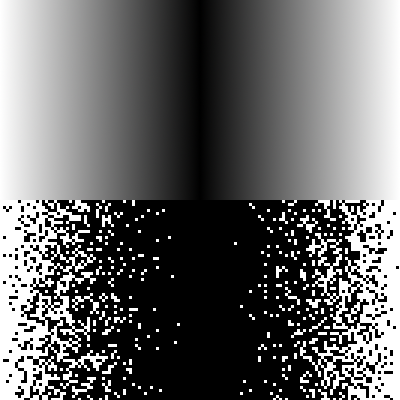This plugins tries to emulate someone hammering a pen on a paper to create hand-made stippling. Basically it converts a luminance map into random paintbrush strokes:

At its worst is can generate lo-fi version of photographs, but the smallest visible detail is around 20x larger than the brush size and it requires a lot of preliminary tweaking:
As usual it can be found here.
Enjoy.
PS: Old timers will notice some likeness with RobA's "Random Density Map" script. Actually the ideas are similar. The main differences are:
At its worst is can generate lo-fi version of photographs, but the smallest visible detail is around 20x larger than the brush size and it requires a lot of preliminary tweaking:
As usual it can be found here.
Enjoy.
PS: Old timers will notice some likeness with RobA's "Random Density Map" script. Actually the ideas are similar. The main differences are:
- this script tries harder to be luminosity-accurate
- this script is somewhat faster
- this script is is not as resource intensive (RDM blows the undo stack to gigantic proportions)
- RDM has some more functionalities






